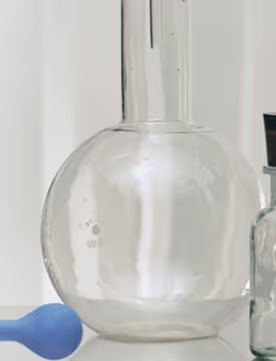Histamine is produced by animals and by plants, and is present in many foods. Excess histamine — whether produced within the body or consumed in histamine-containing foods — is usually cleared away by enzymatic action. When this fails, or when the body is flooded by more histamine than can be easily cleared, symptoms of histamine intolerance may result. In this article we’ll get into the details of what histamine is, causes and symptoms of histamine intolerance, and how a low histamine diet may help reduce intolerance symptoms.
What Is Histamine?
Histamine is an immune compound that plays a number of important roles in the body, from stimulating gastric juices for digestion to carrying signals between neurons in the brain. It’s best known for causing the uncomfortable symptoms we have during an allergic reaction: Histamine causes the itchy throat, watery eyes, and hives we experience in response to allergens like cat dander and pollen. Allergy medications such as Benadryl (diphenhydramine) and Claritin (loratadine) are antihistamines, meaning they block the effect of histamine in the body to alleviate these uncomfortable symptoms. (Source)
In an allergic reaction, histamine is released by specialized immune cells called mast cells. There are receptors for histamine all over the body, including in the gut lining, lungs, and brain. Histamine triggers vasodilation, or the relaxation of blood vessels, and increases the ability of immune cells to move in and out of blood vessels. These effects make it possible for white blood cells and other immune molecules to easily reach areas that are injured or under attack by foreign antigens. Histamine also can increase production of cell-signaling proteins called cytokines, and work as a neurotransmitter in the brain. (Source)
Although we need the inflammation mediated by histamine to protect the body from injury and harmful pathogens, having too much histamine contributes to chronic inflammation and is implicated in many inflammatory conditions such as asthma, autoimmune diseases, and inflammatory skin diseases.
How Does Your Body Regulate Histamine Levels?
How does your body get rid of histamine when there is too much? There are two enzymes, called diamine oxidase (DAO) and histamine N-methyltransferase (HNMT), that can break down histamine in your body.
DAO and HNMT are found in different regions of your body. HNMT is responsible for breaking down histamine inside your cells, whereas DAO is responsible for breaking down histamine in the area surrounding your cells. Both of these enzymes are important for regulating the histamine level in your body. (Source)
But What About Histamine Intolerance?
When DAO or HNMT are not functioning properly, you can develop histamine intolerance. Histamine intolerance is a disorder in which your body has impaired ability to break down histamine.
Histamine intolerance makes you hypersensitive to dietary histamine. However, it is important to note that histamine intolerance, like any intolerance to specific foods, is different from an allergy.
Histamine intolerance has two main causes:
- overproduction of histamine: Environmental allergies and increased consumption of histamine through food or alcohol can result in too much histamine circulating in your body. This high level of histamine can cause you to develop symptoms of histamine intolerance.
- impaired histamine degradation: If DAO or HNMT are not functioning properly, they won’t be able to break down histamine in your body. Impaired enzyme action is the more common cause of histamine intolerance.
(Source)
There are also certain medications that are thought to either prevent DAO from breaking down histamine or cause histamine intolerance directly as a drug side effect. Some of these include:
- chloroquine (antimalarial)
- verapamil and clonidine (antihypertensives)
- amitriptyline (antidepressant)
- clavulanic acid (antibiotic)
(Source)
Do I Have Histamine Intolerance?
Histamine Intolerance Symptoms
Symptoms of histamine intolerance usually occur when you consume foods that are rich in histamine, such as wine or aged cheese. These symptoms are usually gastrointestinal symptoms such as:
- abdominal pain
- gas
- diarrhea
- nausea
- feeling extremely and uncomfortably full after eating
- constipation
You may also experience:
- runny or stuffy nose
- headache
- dizziness
- sneezing
- swelling of the skin
- eczema

Am I At Risk For Histamine Intolerance?
About 1% of the population has histamine intolerance, making it an uncommon condition. Histamine intolerance is more common in middle-aged people and, in the case of histamine intolerance caused by impaired histamine degradation, is often genetic. For example, if one of your parents has histamine intolerance caused by faulty DAO or HNMT, you could be at higher risk of having this same type of histamine intolerance.
Histamine intolerance is also associated with inflammatory and gastrointestinal diseases such as Crohn’s disease, food allergies, and ulcerative colitis. If you have one of these conditions, you may be at higher risk for histamine intolerance. (Source)

.avif)
%20(1).avif)
%20(1).avif)

.avif)











.avif)

%2520(1).avif)



